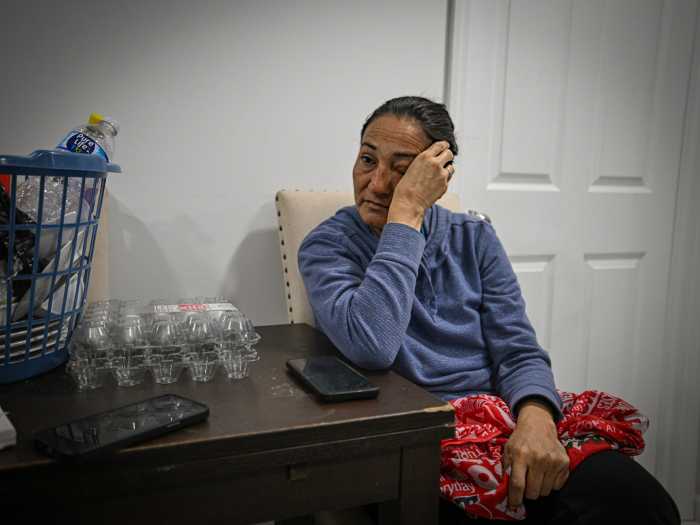BY TERESE LOEB KREUZER | A few weeks ago, Kenneth Adams, C.E.O. and Commissioner of Empire State Development — the arm of State government that promotes business investment — came to New York City with a mission. His directive was to explain Gov. Andrew Cuomo’s 2012-2013 budget to some Downtown honchos and to drum up support.
“This is more than a budget proposal,” Adams explained. “Key reforms are built in.” He said the budget plan was “relatively simple and straightforward.” He described the previous year’s budget as “difficult and challenging. So much of the hard work was done last year.”
Adams said that much of the budget was already set, with 4 percent for education, 4 percent for Medicaid, 2.2 percent for SUNY/CUNY, a 2 percent spending cap — and a $2 billion deficit.
“This year we will eliminate all automatic inflators,” he said. State agency operations such as healthcare and debt service, for instance, which were scheduled to rise by 4.5 percent will remain flat, saving $1.3 billion. Aid to localities will go up by less than the previously scheduled amount, saving $756 million.
This will provide the needed $2 billion savings.
“This year, the budget is manageable,” he said. “The reform proposals will be more of a challenge.” The problem is how to spur private sector job growth while limiting government spending and maintaining “fiscal discipline.”
Economic development proposals would include the repair of more than 100 bridges and 2,000 miles of roads. Ninety municipal water systems would get upgraded and 48 state parks and historic sites would be improved. One hundred fourteen flood control projects would be repaired. Fifteen billion dollars would be devoted to these projects, including $5 billion to build a new Tappen Zee Bridge. The money would come from the state, the federal government, from various Authorities and from private investment.
A new convention center at Aqueduct Racetrack in Queens would replace the Javits Convention Center in Manhattan, which is too small and obsolete. In Phase 1, it would have 3.2 million square feet of display space and 1,000 hotel rooms. In Phase 2, it would be enlarged with a half million additional square feet of display space and 2,000 more hotel rooms.
Resorts World, which has a long-term lease at Aqueduct, would spend $4 billion of its own capital for the project. “The taxpayers, the City and the State would not be at risk,” Adams said.
Another important aspect of the State’s economic development plan would be to build “energy highways.” Adams said that energy infrastructure is a bottleneck across the State. Hydroelectric power is produced in Quebec, Canada, but then is sent to Vermont because New York State doesn’t have the infrastructure to bring the power to the lower Hudson Valley.
Gov. Cuomo wants to establish an Energy Highway Task Force that will issue an R.F.P. and hold a conference to report options to him by June 1 to bid and build a new energy highway. The governor envisions $2 billion in private investment with no capital invested by the State.
He is also pushing for an amendment to the State constitution to legalize casino gambling. “We’re surrounded by states that allow casino gambling,” Adams said. “One billion a year is being lost to these states.” This revenue could be used to support New York State programs.
Among Cuomo’s reform proposals are to simplify and streamline State government, which has grown into a warren of agencies and departments, sometimes with overlapping responsibilities. “We must reevaluate the functions of government agencies across the state,” said Adams.
He said it was also necessary to cap and control executive compensation. The allowance for overhead in State contracts ranges from 3 percent to 50 percent. Moreover, there is no standard for executive compensation in State contracts. It can range from $50,000 a year to over $1 million.
Adams said that Gov. Cuomo has issued an executive order to cap executive compensation at $199,000 under State contracts.
A fourth part of Gov. Cuomo’s budget is what Adams referred to as “mandate relief.” Currently, county governments in New York State spend $8 billion a year on Medicaid. In 2005, the State capped the amount of growth the counties have to pay annually. This year, said Adams, “Gov. Cuomo will go further. We will save counties and New York City $1.2 billion over the next five years with a State takeover of Medicaid growth. You can’t apply a 2 percent property tax cap to local governments and have their obligation go above that,” he said.
To offset this expenditure, the governor proposes a new State pension system with a reduction in benefits. This would only apply to new people coming into the system.
Adams said after his presentation that he expected the greatest opposition to the governor’s plan would come from those opposed to the pension reform measures and to another thorny subject, the proposed criteria for teacher evaluation. There has been a failure to agree on a teacher evaluation system as required by the federal government. Adams quoted Cuomo as having said to the New York State counties that they have until Feb. 17 to agree on a teacher State-wide evaluation system or “I will solve the problem for you.”
If an evaluation system is not fully implemented by individual districts by Jan. 17, 2013, they will be ineligible for a State aid increase of 4 percent of their budgets.
While there are certainly obstacles to the budget that Gov. Cuomo has proposed, Adams said he was “optimistic that this will get done. We have a track record of success,” he said.
Hearings on the budget are currently going on in Albany.




































